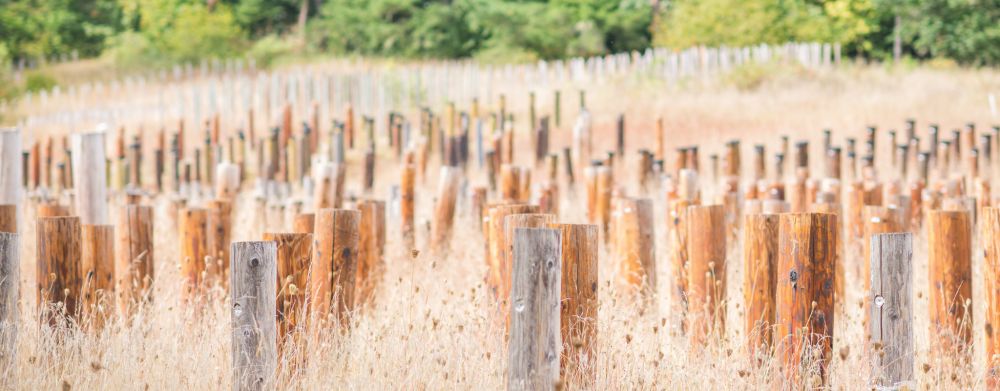
When the Oregon State University (OSU) College of Forestry had to fill the knowledge gap created by the departure of emeritus professor Jeff Morrell, it turned to Gerald Presley, who joined the college in 2019 after earning his PhD at the University of Minnesota and completing postdoctoral research at Oak Ridge Laboratory.
“The opportunity at Oak Ridge gave me a chance to work in a new field, bacterial genetics, where I worked on a project aimed at making value-added chemicals from biomass. At Minnesota, my work focused on the biology of wood decay,” says Presley, assistant professor of forest-based bioproducts. “OSU has been a leader in wood durability research for years and I plan to continue that program now that I am in a position here.”
Since joining the college, Presley finds himself performing a wide variety of research, the bulk of which is related to his role as leader of the Utility Pole Research Cooperative and the Environmental Performance of Treated Wood Research Cooperative.
“The Utility Pole Research Cooperative focuses on research to improve the durability of utility poles,” Presley says. “Many of the studies we perform are designed to compare different treatments that can be done to utility poles to extend their service life and improve their resilience.
This research, Presley says, can benefit the treated wood industry and utilities by improving the durability of commodities produced and used by these industries. It helps make wood products more competitive with carbon-intensive alternatives such as steel, which is important in the overall effort to reduce carbon emissions across all sectors.
The Environmental Performance of Treated Wood Cooperative studies how preservative chemicals leach out of treated wood. The cooperative also looks at ways to prevent leaching into the environment and provides outreach to the broader public. Data collected from this research is used to model the impacts of treated wood on the environment which helps builders determine whether treated wood structures are appropriate for a specific environment.
“The cooperative has performed extensive validation efforts for treated wood best management practices, which are voluntary procedures for manufacturers that can reduce leaching from treated wood products,” Presley says. “We also are embarking on a significant research effort to measure the impact of treated wood used in agriculture and are developing an accelerated leaching and migration test to look at preservative movement from different types of treated wood with different types of water exposure.”
The research the cooperative pursues improves our understanding of these wood products’ environmental dynamics. The work provides insight into the pathways treated wood interacts with in the environment. The efforts can inform mitigation efforts that will improve products and reduce impacts to the environment.
The Creosote Council and several wood-preserving industry partners gave OSU a gift to study the environmental pathways of creosote-treated wood in recognition of Presley’s research capabilities and publication efforts.
The widely used wood preservative is used to preserve critical wood infrastructures such as utility poles, railroad ties, and marine pilings. It has a long history of practical use and is the oldest wood preservative originating from the industrial age.
This gift will fund a master’s student, Skyler Foster, for two years and support a mixture of lab-based and field research studying the migration of polyaromatic hydrocarbons from creosote-treated wood with an intent to quantify the environmental impacts.
“This generous gift will allow us to perform research that will improve our understanding of how creosote treated wood impacts the environment,” Presley says. “We all rely on creosote-treated wood in some capacity, whether it be for the delivery of goods by rail or pilings that support a pier. Knowing the impacts of these commodities on the environment is essential for ensuring their continued use.”
Moving forward, there are many questions on the horizon the research cooperative will address.
“Opportunities will develop in the utility pole market due to the looming loss of pentachlorophenol (penta) as a utility pole treatment and our cooperatives will play an important role in assessing the viability of alternatives for western utilities,” Presley says. “These changes will come with questions about the environmental impacts of penta substitution, something we will continue to investigate as these changes unfold.”
A version of this story appeared in the Spring 2021 issue of Focus on Forestry, the alumni magazine of the Oregon State University College of Forestry.

